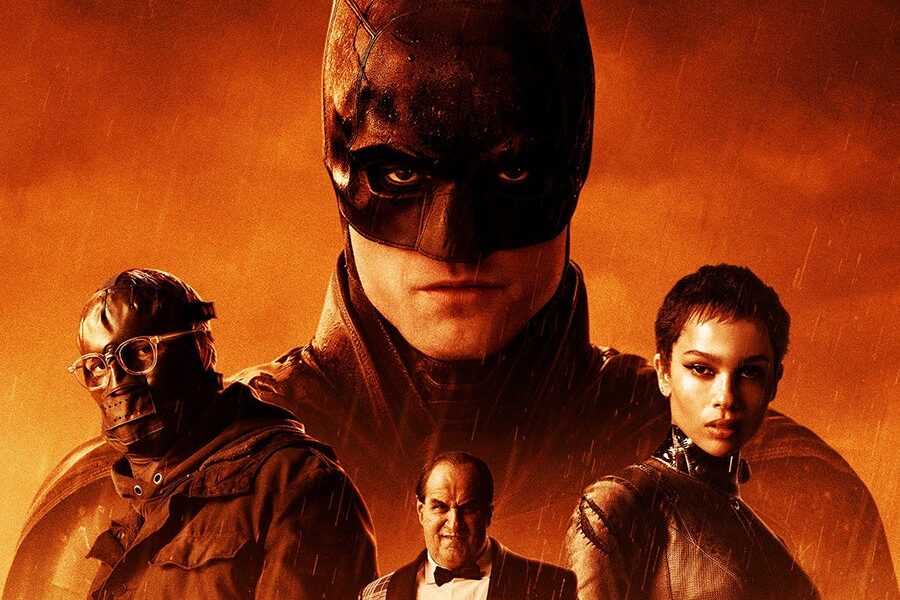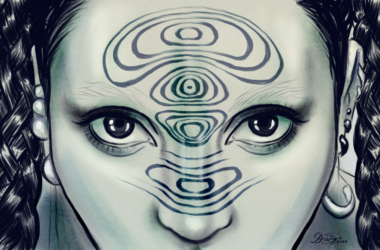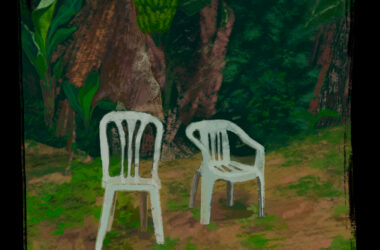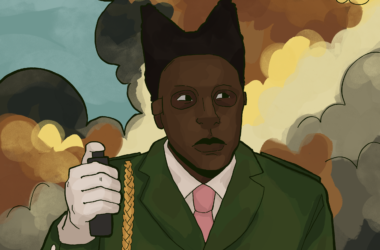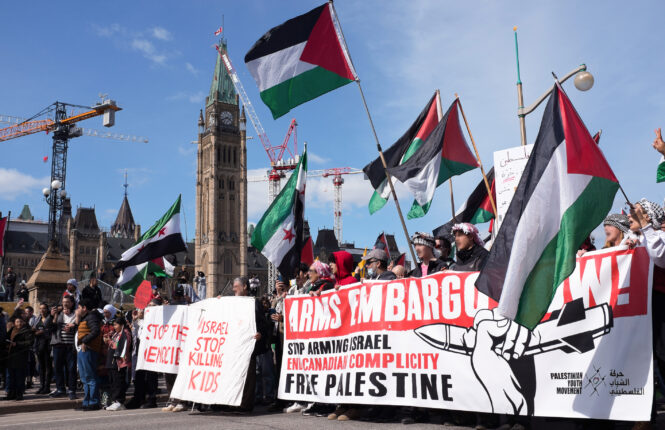Scattered whispers and occasional chuckles echo hollowly through the cinema’s depths, jittery in their disposition and nervous in their delivery. Excited eyes dart back and forth between the screen and the faces surrounding them. A nearly three-year anticipatory build-up is culminating into a gentle frenzy—a feverish apogee. This is the scene my friends and I hurriedly walked in on for a Friday night screening of director Matt Reeves’ long-awaited The Batman.
His take on the Dark Knight (Robert Pattinson)—vengeance personified—features a horrifying storyline captured through staggering cinematography and a chilling score. Released on March 4, the film takes a grim approach to the beloved character, making him anything but the classic superhero archetype. In fact, the movie would be more aptly categorized under the bracket of “action/thriller” than “action/adventure.” Its stern and steely Bruce Wayne personifies Gotham’s ruin through his disheveled appearance and stony demeanour. The story revolves around him investigating a series of mysterious deaths, each connected by a trail of riddle-filled letters addressed directly to The Batman. With Christopher Nolan’s The Dark Knight trilogy’s legacy serving as a Goliathan precedent, The Batman surely serves as strong proof that the future of DC’s most iconic character is in safe hands.
The filming locations of London, Glasgow, and Liverpool create a noir backdrop with sweeping grandeur that ironically contrasts with Gotham’s crumbling morale and murky back alleys. Colossal aerial cinema-shots beautifully capture the city, gripping the audience with every fast-paced camera-flight along Gotham’s night-slash-sky-line. The symphonically chilling musical score complements the film by darkening every scene with a cold and calm tone, warning of dread with every note. These storytelling elements conjure up a horrifying iteration of Batman, turning him into the perfect anti-hero—a character just as terrifying and unpredictable as the movie’s villains, if not more.
The movie pits some of DC’s most recognizable antagonists against the Bat, such as the Penguin (Colin Farrell) and the Riddler (Paul Dano). The complex personalities channeled by these bad guys present a harrowing depiction of Gotham’s decaying underbelly, fleshing out its fractured social setting. They are the result of everything wrong with the city, giving reason for Batman’s vengeance to rise.
Other supporting characters include some fan-favourites: Bruce’s butler and father-figure Alfred Pennyworth (Andy Serkis), good-cop James Gordon (Jeffrey Wright), and the mysterious Catwoman/Selina Kyle (Zoë Kravitz). Each of these characters have their own personalities, flaws, and motivations, much like Batman himself. These complexities make The Batman about more than just Bruce Wayne. The film celebrates its secondary characters in a Shakespearean manner, ensuring that they offer more than just development for the troubled protagonist. That being said, rest assured, the film’s three hours offer more than enough Batman.
With unbridled commercial success—opening up with a global box office chart of $258.2 million in its debut week—The Batman translates the hype into reality. The film’s neo-noir theme keeps audiences on edge, providing them with a gloomy and rain-battered setting for potential future installments. Notwithstanding early casting criticism, Pattinson’s gripping performance makes him a deserving inheritor of the dark cape. With such a forceful film, it is difficult to wait for the next sighting of Gotham’s Caped Crusader.
